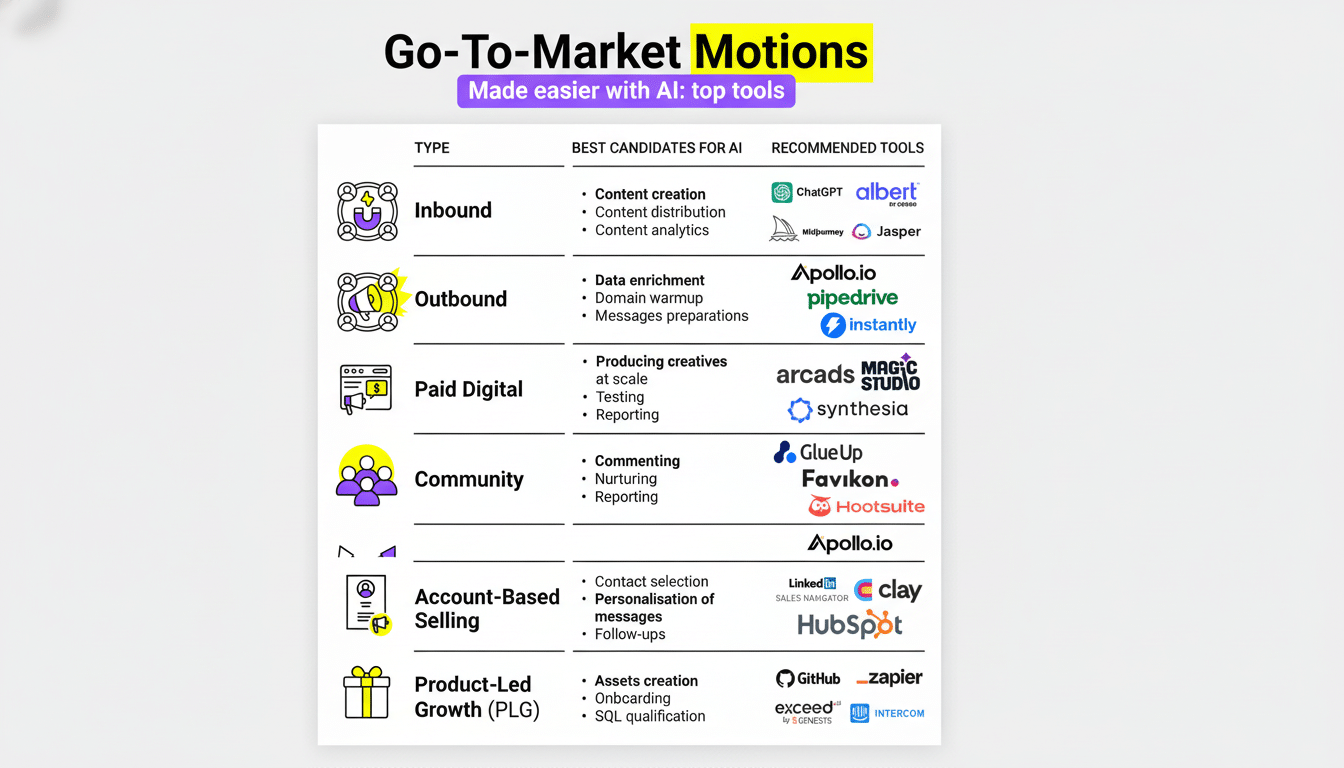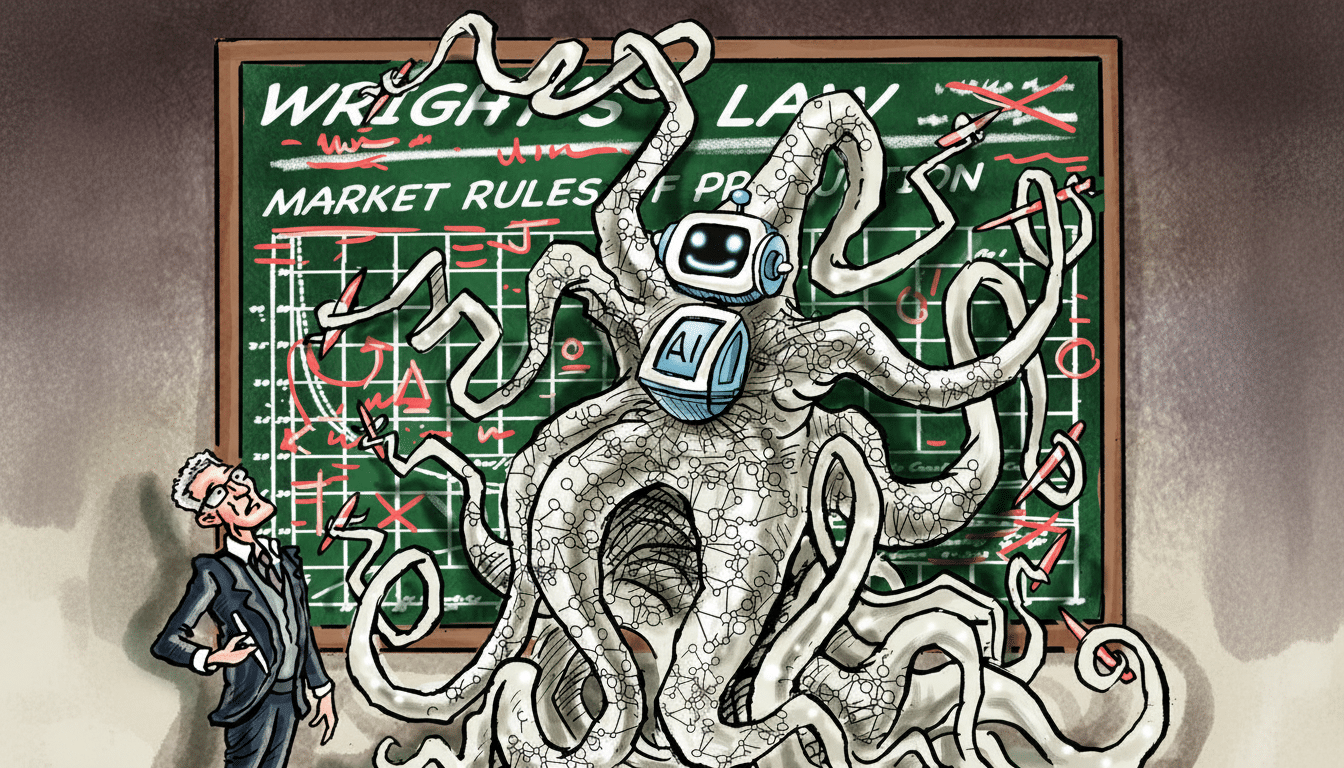OpenAI and Google are honing in on a clear message to new companies and enterprise teams that are rethinking their go-to-market strategy: AI will not replace the fundamentals of marketing and sales, but it radically shortens the lag time between idea-of-product and market impact. The new playbook marries traditional GTM craft with AI-driven velocity, personalization, and measurement that would’ve been impossible for all but a sliver of companies just two years ago.
AI Is Rewriting the GTM Playbook With Dynamic Personalization
The center of gravity is transitioning from static funnels and one-size-fits-all approaches to dynamic ICPs, real-time lead scoring, and creative that adapts to context. Unsupervised learning from unstructured data (earnings calls, forum threads, product reviews) can further enable large language models to optimize account list refinement, construct micro-vertical narratives, and surface intent signals that manual teams miss in order to prioritize and personalize outreach.
- AI Is Rewriting the GTM Playbook With Dynamic Personalization
- Google Emphasizes Craft and Speed in Marketing With AI
- OpenAI’s Push for Personalization at Scale in Startup GTM
- Hiring and Org Design Are Transforming for AI-Driven Teams
- Metrics and Governance Standards for an AI-First GTM
- The Near-Term Playbook for Building an AI-First GTM

McKinsey projects generative AI could deliver hundreds of billions in annual value to marketing and sales alone, powering personalization at scale, smarter pricing, and faster content lifecycles. Meanwhile, Gartner estimates that by next year 80 percent of B2B sales interactions will take place in digital channels—which means a stronger need for AI to figure out complex and noisy buyer journeys.
Google Emphasizes Craft and Speed in Marketing With AI
Google’s position is that the craft of marketing still matters—customer insight, research rigor, brand narrative—but AI turbocharges it. Marketers can make infinitely more hypotheses, test them more quickly, and measure the right outcome metrics without growing headcount or timelines.
On the ground, that resembles creative-to-messaging systems built on Vertex AI and BigQuery, teams updating marketing mix models week over week instead of quarterly, and running geo-experiments to confirm incrementality. Privacy-safe signals are filling the gap left by third-party cookies, and AI is enabling those insights to be translated into channel-specific assets in hours versus weeks. The upshot is not simply more content—tighter feedback loops, clearer causality between spend and growth.
OpenAI’s Push for Personalization at Scale in Startup GTM
OpenAI’s advice to startups revolves around precision: Do more with less by following stronger signals. They don’t pull lists of prospects; they use model-driven prompts to search for potential customers that satisfy specific criteria—tech stack, hiring activity, compliance landscape—and then customize messaging around the job-to-be-done for each member of a buying committee.
On the inbound side, LLMs can triage and qualify leads with higher precision by reading free-form notes, demo requests, and product telemetry, and by routing to the appropriate play (self-serve nurture, PQL fast track, or enterprise consult).
Startups are building lightweight “SDR copilot” workflows using GPT to draft emails, summarize calls, and auto-update CRM records, all of which can lift rep productivity while preserving humans in the loop for judgment calls.

Hiring and Org Design Are Transforming for AI-Driven Teams
Both companies signal a transition in hiring from the specialists themselves to T-shaped operators who combine AI literacy with deep domain knowledge. Curiosity, experimentation, and comfort with data are increasingly must-haves for marketers and sellers alike. New hybrid roles are beginning to emerge—RevOps AI lead, prompt strategist, product marketer for agents—at the intersection of tooling, analytics, and narrative.
The tech is as important as the cultural shift. Winning teams share pipelines through marketing and sales, invest in product-led growth, have shared definitions for signals and stages, and co-own experiments. AI is the glue: the single source of truth around ICP evolution, pipeline health, and content performance.
Metrics and Governance Standards for an AI-First GTM
Volume metrics are yielding to signal quality. Rather than sending impressions or emails to the rest of the company as reasons to celebrate, leaders look at ID, STS conversion compounding through stages 1–5, sales cycle compression, and CAC payback alongside its sister LTV. Uplift is quantified with holdouts, multi-armed bandits, and propensity models, not just A/Bs on subject lines.
Governance is non-negotiable. Teams should have consent-aware data pipelines, immediate protections, and human review for outbound to prevent spammy patterns. Brand tone checks, bias audits, and claim substantiation workflows mitigate legal and reputational risk. Model drift monitoring presses LPs to keep their AI models’ accuracy high so that scoring and recommendations don’t silently get worse over time due to changing markets.
The Near-Term Playbook for Building an AI-First GTM
- Begin with signal mapping: map out your highest-intent triggers across product use, web behavior, and firmographics, then score AI towards those moments.
- Construct a modular creative system: several narrative streams broken down into components, which AI can mold by persona, industry, and funnel stage.
- Instrument experiments: formulate a regular cadence of message tests, landing pages, and pricing copy with clear guardrails and a shared results log.
- Raise RevOps: pool data modeling, stimulus libraries, and evaluation baselines so that every team enjoys the efforts of a consistent AI backbone.
- Keep humans in charge: save expert review for high-stakes assets and enterprise outreach, and train teams on when to override model outputs.
The straight answer from OpenAI and Google is pragmatic: Eighty percent true GTM still wins, but AI changes the pace.
Companies that mix timeless craft with model-driven precision will be able to run more experiments, learn faster, and reap advantages while the competition is still scrapping its decks.

